The multi-channel marketing strategy enables businesses to engage with their audience across various platforms and provides a cohesive brand experience that brings customer loyalty.
However, as it offers several benefits, it also comes with challenges. Selecting the proper channels, managing multiple campaigns, or ensuring consistent messaging are some of the difficulties you might encounter when working with a multichannel marketing approach, meaning a hard strategy if you’re not prepared.
But don’t worry. In this article, we’ll delve into these challenges and provide valuable tips to help you create an effective multichannel marketing strategy that resonates with your target audience and generates leads.
1. Choosing the Right Channels
The first challenge that you’ll find in the realm of multichannel marketing is the selection of the most appropriate channels. This decision is not easy, as this landscape has various platforms for marketing your products and services. You have social media, sales channels, online stores, emails, and more.
It could be tough to figure out which one to use because each business is different, and what works in one channel might not work for another. Moreover, using a few channels might restrict how many people you can reach and limit the number of potential customers for your business. On the other hand, using too many different channels can be overwhelming and hard to keep up with.
Working with multiple channels requires you to understand where to spend your time and money. If you make the wrong choice, you might lead your strategy to wasted efforts and miss the connection with people who want your services.
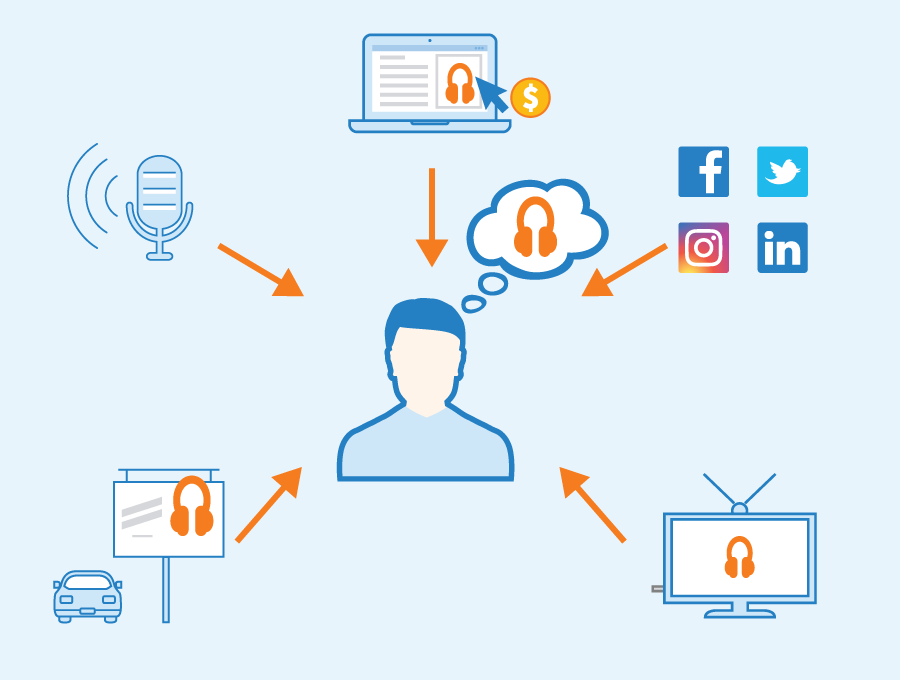
Quick Tips
Here are some tips that will help you overcome this challenge:
- Test and learn: don’t be afraid to experiment. Try different platforms on a small scale before fully committing.
- Understand your audience: Different demographic groups exhibit distinct preferences and behaviors, which can significantly influence the effectiveness of one channel over another.
- Seek customer feedback: Connect with your customers and ask for their feedback on how and where they prefer to interact.
2. Managing Multiple Campaigns
Running campaigns across various channels at the same time is another tough challenge you will encounter in multi-channel marketing. Whether social media, online marketplaces, or email, each channel needs its own approach. But to really succeed, these campaigns should work together smoothly across all platforms.
Another challenge is making sure your campaigns span multiple channels fluidly. Your message and branding should feel consistent, whether a customer sees your campaign on one platform or another. This requires careful planning of your multi-channel marketing strategy and a good understanding of how each channel works.
Quick Tips
Follow these tips to manage your marketing campaigns simultaneously in multiple channels:
- Use the right tools: Look into multi-channel software that can help you keep track of all your campaigns in one place. This can save a lot of time and hassle.
- Automate what you can: Use multi-channel marketing automation tools to handle repetitive tasks like posting on social media or sending out emails based on a schedule you set. With this approach, you can focus on the bigger picture and make sure your campaigns work together well.
- Stay organized: With so many campaigns running simultaneously, staying organized is key. Keep a calendar and checklists to make sure nothing is missed.
3. Overselling and Overstocking
Investing in a multichannel approach is challenging when it comes to managing supply and demand and estimating the exact amount of product you need to have available. Keeping too much inventory (overstocking) can be expensive, but not having stock can limit your growth and your ability to serve new customers, leading to missed opportunities.
The consequences of overselling can be worse. It often leads to delayed order fulfillment, causing frustration in your clients. Imagine how customers feel when they face longer wait times or even order cancellations. Such experiences might destroy the trust and loyalty of your clients, damaging your business reputation.
Relying on manual inventory tracking is not only time-consuming but also limits the complete inventory visibility and complicates the management of the orders. This is where multi-channel selling software becomes invaluable. It helps you keep a close eye on your inventory, ensuring you have a real-time view of your stock levels.
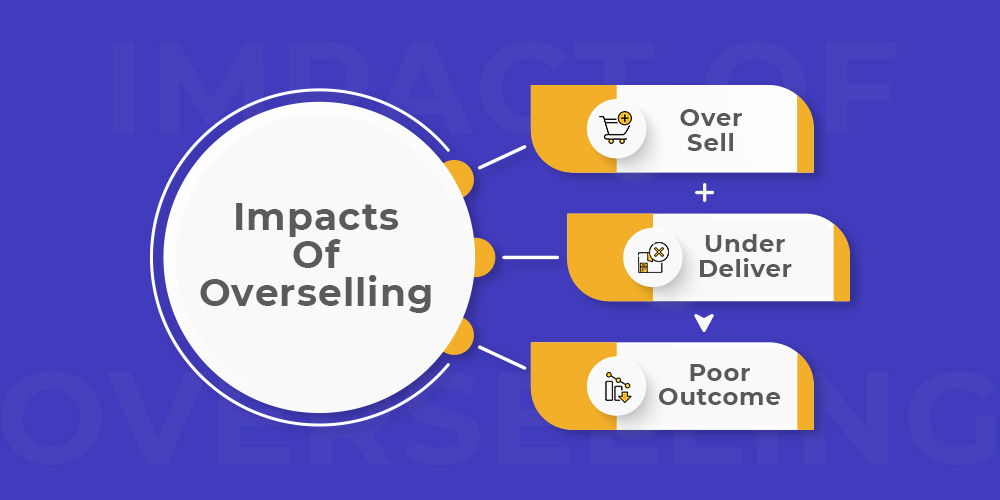
Quick Tips
Here are three quick tips for helping you with your inventory management:
- Communicate across teams: Communication channels between your sales, inventory, and marketing teams are also crucial, so make sure they talk to each other. With this, you’ll avoid surprises and keep everyone informed about stock levels and promotions.
- Forecast demand: Try to predict how much you’ll sell based on past sales, trends, and upcoming promotions to help you stock the right amount of products.
- Review regularly: Always check your inventory levels and your sales constantly. This way, you’ll catch potential problems early and adjust your strategy as needed.
4. Investment Costs
Investing in more channels to sell your products, whether through an online store, PPC advertising, social media platforms, or physical stores, means spending more on marketing efforts. So, managing multiple channels simultaneously can quickly increase costs, challenging all businesses, especially startups and their marketing strategies.
A multichannel strategy, while effective, demands careful investment. Unlike focusing on a single channel, where your budget can be more concentrated, expanding your efforts across various distribution channels requires a broader approach.
The goal is to get your product in front of as many eyes as possible, but doing so without spending an important amount of money is crucial for your business. Remember, each additional channel not only adds potential revenue streams but also additional costs.
Quick Tips
As this challenge might be the most important, there are numerous ways to take care of your budget and your business. The following tips will help you:
- Prioritize: Focus your budget on channels that have proven to be effective for your business. It’s better to be strong in a few channels than weak in many.
- Leverage organic growth: Paid marketing isn’t the only way to grow your presence. Organic growth through word-of-mouth, content marketing, and social media engagement can be incredibly powerful.
- Use free tools: Many online channels offer free tools to help you with your marketing efforts without extra costs, such as social media platforms that have built-in analytics to track engagement and reach. There are also free versions of email marketing software with great features for startups.
- Start small: When you’re just starting out, it’s tempting to try and be everywhere at once. However, this can quickly drain your resources. A smarter approach is to select a few platforms your target audience uses the most.
5. Targeted Messaging
In multichannel marketing, delivering targeted messaging is both an art and a science. The challenge isn’t just about reaching your target audience, it’s about capturing their attention, engaging them effectively, and inspiring action – no matter which channel they’re on. In a landscape where customers are bombarded with choices and information, you must ensure that your marketing message is compelling and action-driven.
Furthermore, maintaining a consistent brand message becomes difficult as you expand your presence across more channels. Each channel comes with its own set of rules, nuances, and best practices, making it essential to design messages that resonate across all platforms while still adhering to individual channel requirements.
Coordinating messaging across these diverse platforms requires a strategic approach to ensure your brand leaves a strong, consistent first impression everywhere and builds trust with your audience.
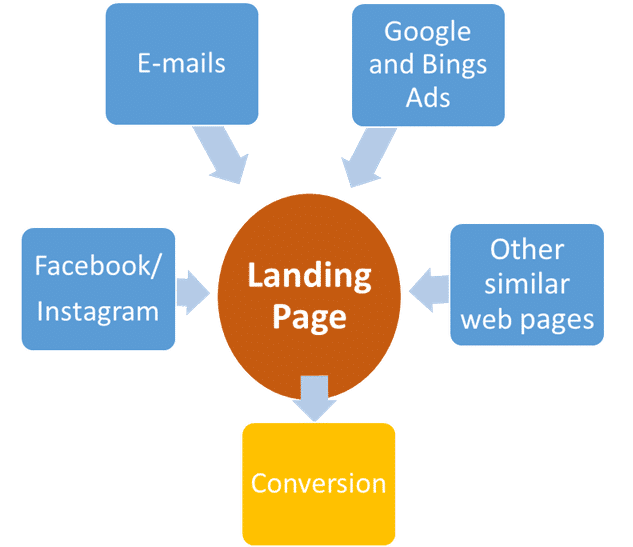
Quick Tips
Remember, consistency is key to multichannel marketing. By ensuring a coherent and compelling marketing message, you’ll be better positioned to attract and retain your target market, drive user acquisition, and foster customer loyalty. So, in order to achieve the correct message, follow these tips:
- Update all channels together: When you update your messaging, branding, or visuals, make sure these updates are reflected across all channels to ensure that no matter where your customers encounter your brand, they receive the same message.
- Appoint a brand guardian: Designate someone in your team to oversee and manage these updates across all channels. Having a clear process and a dedicated person or team responsible for maintaining brand consistency can make a big difference in ensuring your messaging remains unified and effective.
- Organize your assets: as you expand to more channels, keep all your marketing assets – photos, graphics, messages – organized in one place. Tools like Google Sheets can be useful for this.
6. Changing Promotion Strategy
In marketing, strategies are constantly evolving, especially when promoting your businesses across multiple channels. The challenge lies in keeping up with these changes and ensuring that your promotion strategy remains effective in all the channels.
You must also understand the difference between omnichannel and multichannel when you update your promotion strategy because it’s common for many businesses to mix up these two concepts.
Moreover, a new strategy needs high-quality content that resonates with your audience, no matter which channels you’re working with. However, as mentioned earlier, the content needs to be tailored to fit each channel’s unique audience and format. This is where multi-channel content marketing comes into play, requiring a strategic approach to ensure your content effectively engages your target audience or other channels as well.
Quick Tips
Here are some tips that will help you overcome this challenge:
- Stay informed: Look up the latest trends and changes in marketing strategies by regularly reading industry news and attending webinars or conferences. This will help you anticipate the changes your strategy needs and adapt it accordingly.
- Be flexible: Be ready to adjust your current strategy as needed. What works on one channel might now work on another, and what’s effective today might change tomorrow. Flexibility is essential in responding to these changes.
- Keep testing and learning: We said this earlier, but don’t be afraid to experiment with new approaches or content types. Use analytics to track the performance and learn from the results to refine your strategy continually.
7. Customer Support and Experience
Delivering outstanding customer support and creating an exceptional customer experience is challenging. While managing customer relations might be straightforward when you only sell through your website, it becomes harder as you expand to more platforms.
The key is to prioritize your customer’s needs. This means understanding their pain points, offering value, selling high-quality products, providing top-notch support, and crafting delightful and unmatched experiences that customer finds meaningful.
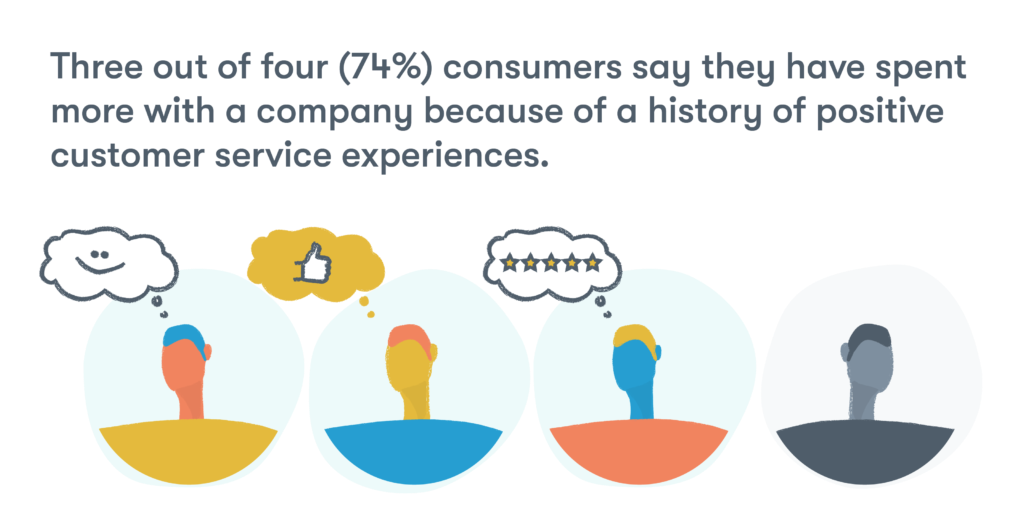
Quick Tips
Check these tips for a better customer experience and support:
- Hire the right people: A stellar team is the foundation of excellent customer support. Focus on building one that’s dedicated to providing great support. Look for individuals who are skilled and genuinely care about making a positive impact on the customer experience.
- Document guidelines: You need to know how to interact with your customers on each channel and marketplace, so take time to create detailed guidelines for your team to follow. These should include examples, links, and stories to make the guidelines as helpful and relevant as possible.
- Map out the customer journey: Using customer data to understand their buying process is essential for an unforgettable experience. Map out the customer journey, from discovery and purchase to delivery and reordering. Identify opportunities to delight and assist your customers at every step. This comprehensive view will help you anticipate their needs and exceed their expectations.
- Use customer support tools: you can find various tools to guarantee that each customer receives a consistent level of interaction and service whenever they contact your company.
The Advantages of Multi-Channel Marketing
Despite all the challenges you can find in multi-channel marketing, it also offers many advantages that can significantly enhance your brand’s presence and performance. Let’s review these benefits with some multi-channel marketing examples.
Enhanced Brand Image
A brand limited to a single channel may come across as outdated and unable to provide a satisfying customer experience. So, brands that make themselves available on multiple platforms where their audience is active are perceived as more attentive to customer needs and, as a result, often enjoy greater loyalty. This presence helps improve the brand’s overall image, making it seem more modern, accessible, and customer-focused.
Test Gorilla enhanced its brand image with a multi-channel PPC advertising strategy through Facebook and Google, redirecting its viewers to an actionable blog post. Understanding their audience, they opt to serve educational content through ads showing how their product works instead of selling it directly. This approach is less invasive and more friendly to the customer.

Increased Sales
It’s common for consumers not to purchase when they first encounter a product. They tend to browse, read reviews, and compare prices across different channels, both offline and online.
By engaging customers through multiple channels, you can increase your brand’s visibility and the likelihood of converting browsing into sales. This multi-channel presence helps to increase ROAS (Return on Ad Spend) by optimizing the paths to purchase and encouraging more informed and confident buying decisions.
For example, BigCommerce takes the multichannel marketing approach to another level, engaging with its customers through Instagram, Facebook, its own website, and more. The ads on these channels redirect viewers to a landing page that first showcases social proof from existing customers and later mentions their essential plans for their services. This customer journey mapping through multiple channels helped them increase their sales and generate more leads.
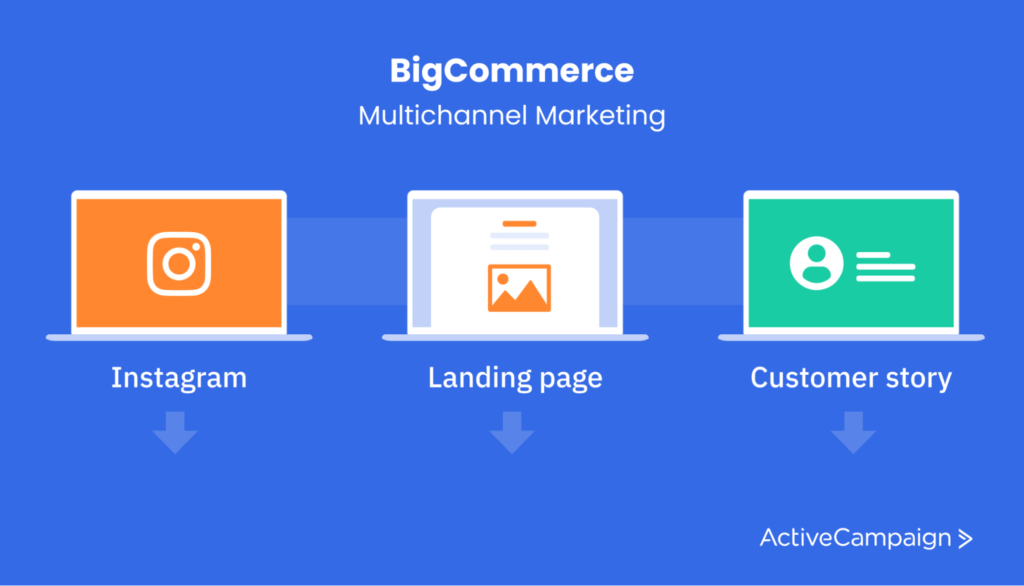
Qualified Traffic
A robust multi-channel marketing strategy can also significantly increase the quality of traffic to your website. You can direct more relevant and interested visitors to your site or app by engaging potential customers on the platforms they trust.
The multichannel marketing approach not only boosts website traffic but also increases the conversion rate, as the visitors are already interested in what you have to offer.
For example, the mobile game developer Supercell used various platforms to generate qualified traffic during the launch of Brawl Stars. This mobile game marketing strategy worked with YouTube, live-streaming platforms, social media, and influencers to showcase the gameplay before the game’s release, captivating the Youtubers’ existing fanbases (young mobile gamers) and amassing over 5 million sign-ups.
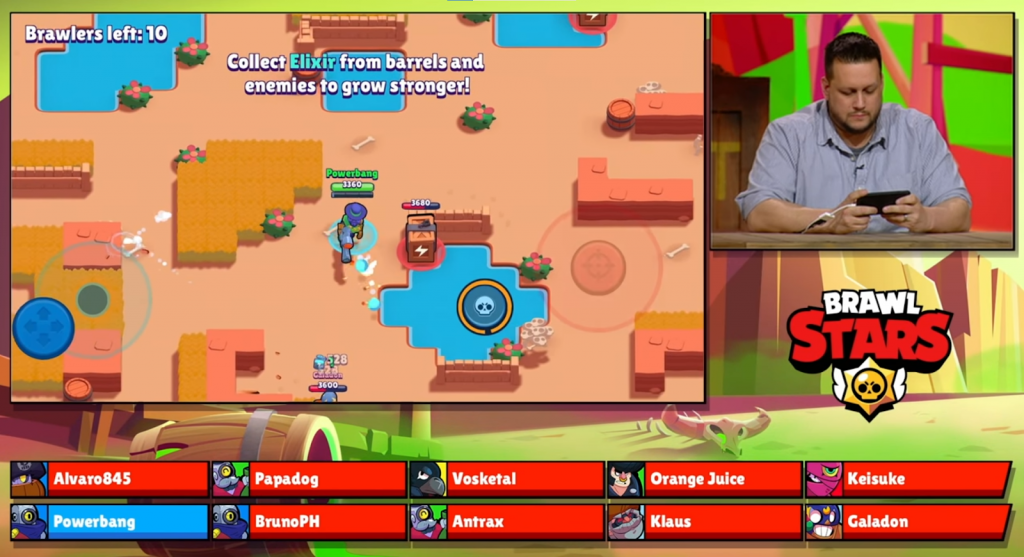
Ready to Overcome the Multi-Channel Marketing Challenges?
Creating a multi-channel marketing strategy is a journey with challenges, but it also comes with multiple opportunities to increase sales and brand awareness and create deeper customer loyalty.
Remember, multichannel marketing is not just about being present on multiple platforms, it’s about creating meaningful interactions that resonate with your audience, wherever they are. You can face these challenges by focusing on high-quality content, leveraging data to gain insights into customer behavior, and staying adaptable in your approach.
If you need expert guidance and want to take your multichannel marketing strategy to the next level, don’t hesitate to contact us at GamerSeo. We specialize in creating marketing strategies that drive great results and help you stand out among competitors.

SEO enthusiast and digital marketing strategist. My expertise lies in optimizing websites for organic traffic growth and search engine visibility. I carry out, among others, SEO tests, keyword research and analytical activities using Google Analytics. Privately, he is a lover of mountains and bicycle trips.

